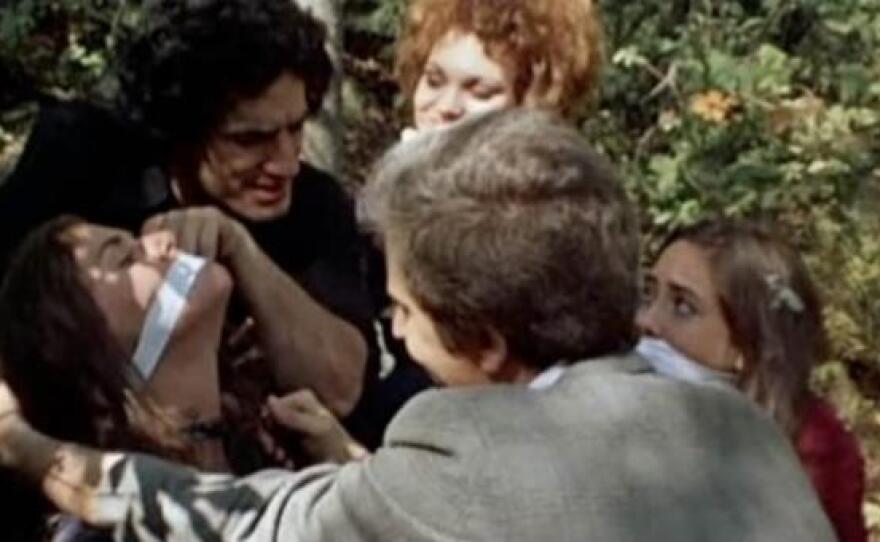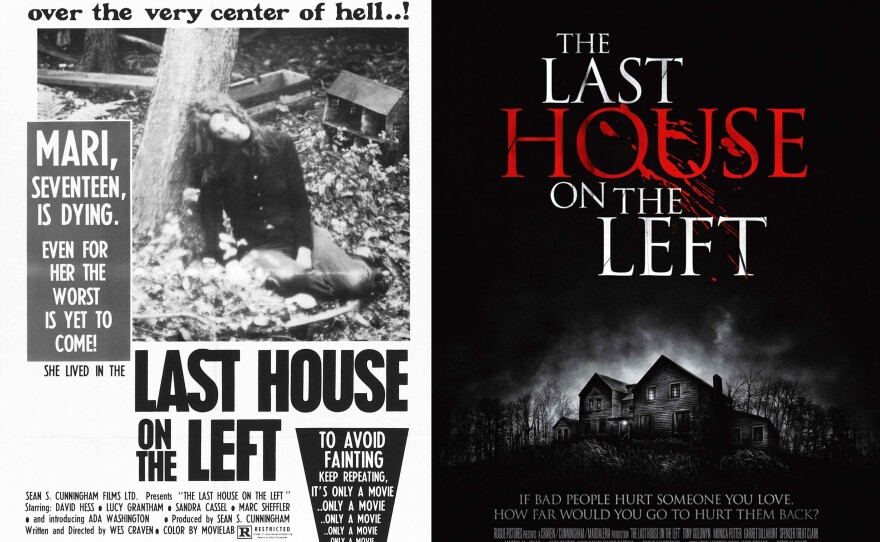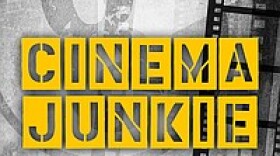Companion Viewing
Companion viewing:
“The Virgin Spring” (1960)
“The Last House on the Left” (1972),
“Texas Chainsaw Massacre” (1974)
The teen critics have spoken out on "The Last House on the Left" (opened March 13 throughout San Diego) and I was curious to hear what they had to say since they weren't even born when the original film came out (OK, that made me feel old).
I was glad that at least one of them had seen the original and found it more disturbing than the remake. But as someone who saw Wes Craven's feature debut when I was a teenager in the 1970s I'd just like to remind people of what that was like.
As with Alfred Hitchcock's “Psycho” (in some ways the granddaddy of the slasher film), “The Last House on the Left” was disturbing in the way it undermined the audience's sense of security and made us something of an accomplice in its crimes. Hitchcock was a master and Craven is a cruder craftsman but both of their films unnerved the audience with violence early on and then implicating viewers to a degree in the crimes committed.
With “Psycho,” we got caught up in the minutia of Anthony Perkins' killer cleaning up after his bloody murder and some reluctantly wanted to see him get away with the crime because they were so wrapped up in his process. In the case of “Last House,” we relish the revenge taken by a pair of parents who were not all that different from us. The horror, as in the best of the genre, we discover can lie within ourselves.
This year's “The Last House on the Left” remakes Wes Craven's 1972 film of the same name, which was itself an unofficial remake of Ingmar Bergman's “The Virgin Spring” (1960).
Craven took Bergman's medieval tale of a young girl who is raped and murdered, and whose murderers end up seeking shelter at her parents' home where mom and dad exact a chilling revenge.

What made Craven's 1972 film so good as a remake is that the source material was unexpected and he didn't have to tweak it very much to find disturbing horror elements. Plus the gritty, low-tech look of Craven's film debut added to the creepiness of the proceedings. While Bergman's film tackled religion and morality overtly and seriously, Craven's approach was to present something of an amoral universe. Instead of an innocent young virgin on her way to church, Craven's adolescent girls are on their way to a rock concert and looking for a good time.
The assailants in Craven's film are depicted as sadistic sociopaths devoid of any humanity as they brutalize the girls. They break and batter the two girls as if they were nothing more than dolls to be played with.
Craven says his film was in part a reaction to the violence he saw on TV in news footage about the Vietnam War. He has said that he wanted to capture that same sense of reality in the violence he put on screen.
He also injected irony into the film by having the girl's mother realize that her daughter's attackers are the "guests" in their house when she sees a peace symbol necklace hanging from a gang member's neck. The necklace had been a birthday present to her daughter.
When it came out, Craven's film was controversial for its violence and brutal sexuality; it divided critics. Some felt it was pure exploitative trash while others saw the film as breaking the rules in an artistically challenging manner.
When I spoke with Craven a few years back (at the time he was producing the remake of his “The Hills Have Eyes”), he discussed what he thought he needed to do with his horror film debut in order to make an impact: “It's interesting, the first time I watched ‘Texas Chainsaw Massacre,’ I concluded that it must have been made by a group of Mansonites because it had exactly that quality; it was kind of greenish, grainy and the whole thing looked home made. It was always ironic to meet Tobe Hooper later and he was the sweetest guy in world. So I devised a theory that is that the first monster that you must frighten an audience with is the director, because I think it's important that the audience feel that this is outside the boundaries of anything that is controlled or acceptable or polite or civilized. Because that's where these fears come from. It doesn't from the civilized matrix; it comes from outside of that. A film that looks like it was made by a bunch of people rather than a corporation immediately puts you on footing that's shaky.”
And that's what the remake completely misses.
Directed by Dennis Iliadis, the remake looks like a product produced by a slick corporation. There's a gloss and sheen to everything in the new “The Last House on the Left” -- even the violence has high production values. It all looks planned and staged in a way that Craven's original film did not.
And all the slickness works against the remake because it helps to distance the audience from the unpleasantness on the screen. Like “Henry: Portrait of a Serial Killer,” Craven's “The Last House on the Left” used its lack of funds to create a film where the DIY approach made it seem somehow more real and therefore more terrifying because we believed it could happen.
The remake also takes the violence to ridiculous extremes with an elaborate “Saw”-like torture gimmick at the end. In the original film, Craven did more with less. He upped our discomfort by having Mari raped and tortured right by her house as the police were talking with her parents and assuring them that she was most likely safe.
That's a scene from every parent's nightmare.
The assailants were also much more vicious in their attacks and more deliberately cruel. In the original, the law (represented by inept cops) and social order seem not to exist and that creates a more unnerving moral universe for the story to play out, and that probably reflected the way a young man like Craven felt about the government, military and cops during the Vietnam War era.
But Iliadis doesn't seem to have anything motivating him as he goes through the motions of creating a horror film. He conveys no sense of pushing the limits or breaking the rules and that makes for a less effective horror film.

Then the parents respond to the crime with almost the same brutality and lack of concern about consequences. In the remake, the parents gradually turn violent and seem motivated more by fear than revenge. There's nothing feral or savage in their response, they just seem to be protecting themselves by making a pre-emptive strike.
But the mother in the first film exacts a fittingly nasty revenge on one of the male attackers by luring him outside for a sex game that ends with her crudely castrating him. Her actions are meant to be cruel revenge not self-defense.
In Craven's film the parents' revenge, while satisfying, raises some disturbing questions as it blurs the line between the criminals and the decent citizens. In the original the cops arrive and could have arrested the killers, but the parents choose to exact their own revenge regardless of the law or the consequences. And Craven makes us embrace their darkness and we feel satisfaction at their revenge. The new film delivers a far less disturbing and troubling retribution.
“The Last House on the Left” (rated R for sadistic brutal violence including a rape and disturbing images, language, nudity and some drug use) tames down the violence, sexuality, and horror from the original. In some ways it's a better remake than the recent “Friday the 13th” and assorted American redoes of Asian horror redoes (“Shutter,” “The Eye,” “Pulse”).
So that's faint praise. But at least Iliadis takes the horror seriously and doesn't go for the jokey, self-reflexive refuge of too many horror films (Craven though has to take responsibility for that sad turn with his “Scream” franchise). Iliadis attempts to develop some narrative structure and modest visual style (he likes water) but he seems completely unaware of what made the first film scary and disturbing.







